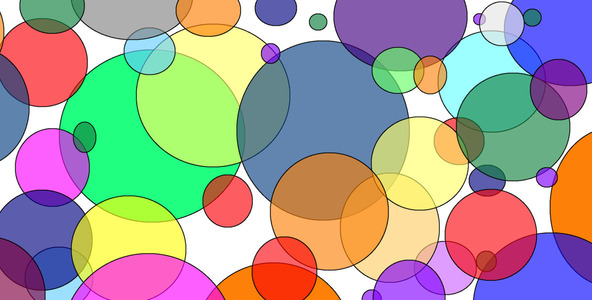Towers of Babble
In the Abrahamic religions (Judaism, Christianity, and Islam), we have a story from the ancient book of Genesis about the Tower of Babel.
As the story goes, in the years after Noah and the Flood (the one with the ark and all the animals marching two by two and all of that), humanity was just starting to get back on its feet after being nearly wiped out in the great flood.
At this time, some people got together in the city of Babel. They decided that they would work together to build a huge tower (or possibly a pyramid?) that reached to the sky. They were going to show the rest of the world how great and smart and powerful they were.
The Genesis story doesn’t say exactly how far the people of Babel got with this tower project, but we are told that in the end it was a complete failure. Perhaps this was the first massive boondoggle in the history of engineering and project management. It certainly wasn’t the last.
We don’t know how much the failed tower project cost, but we do know why it failed. And why else? It was a communication breakdown.
Imagine the scope and scale of the teams required to design and build a massive tower to the sky, with only primitive tooling and no automation. Imagine the complexity and the challenge of keeping all the moving pieces in sync. If you’ve ever built a house, or if you’ve done another project that required coordinating between different contractors, plumbers, electricians, etc, then you know a little bit of the pain that the Babel tower architects must have felt, even on a good day.
And then, however it happened, communication broke down completely, and work came crashing to a halt.
It isn’t really clear from the story exactly how this happened. The traditional Sunday School version is that one day, out of the blue, God randomly assigned everyone a new language, and that was that. Suddenly you could only communicate with 1/n of your friends and family and colleagues.
However, the text from Genesis is a bit vague here. Ask anyone who’s ever worked on a large enough project, and they can tell you stories that would make you believe it’s equally possible that the total communication breakdown happened between teams and across sub-cultures that were involved with the project.
Stone masons versus carpenters.
Fans of a steped pyramid design, say, versus proponents of a sleeker design with smooth sides.
Architects versus builders.
Labor versus capital.
People who like the color blue versus people who prefer red.
People who say “po-tay-to” versus people who say “po-tah-to”.
Regardless of the precise mechanism of how it happened, the communication broke down, and people gave up. They didn’t just quit the project, they left the city entirely, with dozens of splinter groups heading off in different directions and sticking together only with others who spoke their language.
It sounds a bit like the backstory in the movie The Matrix, doesn’t it? All of humanity, united and celebrating our own technological brilliance, only to crash hard soon afterwards to suffer the consequences of our hubris.
In The Matrix, the technological achievement was AI – a genuine, general artifiical intelligence as smart as or smarter than a human.
In the real world when The Matrix premiered in 1999, humanity’s great technological achievement was the Internet. Suddenly we were all connected, and we could communicate instantly with anyone, anywhere in the world. It was glorious!
Certainly this new level of connectivity in the post Cold War period was sure to usher in a new era of peace, prosperity, and harmony.
Or was it?
One of the major problems with the big social platforms of the 2000’s is that they attempt to cram everyone on the planet into a single, giant, unified online space.
This sounds good at first.
All your friends are there – yay!
And various famous people who you admire – yay!
And better yet, you don’t even have to go and seek out content from these people. The platform provides an algorithm (some might even call it an AI) that will automatically show you whatever it thinks you’d be interested in.
But then, your friends and heroes are not the only people on this platform. There’s also the random guy who sat next to you in high school Geography class. And the girl who sneered at you in front of everyone in 9th grade because your clothes weren’t cool enough.
Hmmm.
Come to think of it, if you’re younger than a certain age, all of your highschool teachers are probably on there, too.
And your ex.
Plus the crazy guy down the street with all the political signs in his yard – and we all know that guy posts a lot.
Pretty soon, this idea doesn’t sound so good anymore.
You have to wonder: The people who designed this new tower of babble, did they really expect everyone to just get along?1
But back out here in the real world, life is messy. It seems that many of us humans can’t even make it through a family reunion without harsh words and spilled drinks.
So how should anyone expect us all to get along online? On a screen, we don’t even get the facial cues and body language and all the other little organic things from the real world that help to remind us that other people are human too, just like us, and just as deserving of love and compassion.2
Even if you don’t accept the story of the Tower of Babel as a historical fact, it still provides a powerful lesson in human nature. It just isn’t realistic to expect everyone on earth to coexist peacefully in the same space for any prolonged period of time.
In the social sciences, research from anthropologist Robin Dunbar and others suggests that humans can comfortably maintain connections with only about 150-250 people.3 Everyone past about number 250 falls into various shades of “random stranger”.
So, what are we to do?
Option 1, which the big social platforms are attemtping now, is basically to keep an uneasy peace in our new online City of Babel (“Cyberbabel”!) by policing this digital megalopolis using a combination of human and automated machine patrols.4 These patrols do the best they can to find and punish bad behavior, but they have to be careful.
The rulers of Cyberbabel can’t afford to have too many residents chased away. After all, this mighty tower of user-generated content isn’t going to build itself. So the rulers tend to tolerate all but the worst transgressions between the various warring factions, sometimes for years, before finally deciding to exile this or that clique or clan when the cumulative strife gets to be too much.
It isn’t pretty, and basically everyone is unhappy.
Option 2, which we are pursuing in Circles, is to minimize the conflict from the get-go, by not attempting to cram everyone into the same online space to begin with.
To totally and abruptly switch metaphors for a moment: Imagine you have two atomic nucleii.
It’s much harder to guarantee safety if you insist on slamming the two of them together at very high energy. Sure, you could put in place all the structures and people and procedures that you need to keep people safe in and around a reactor. But you’ll have a much easier and safer time if you simply refrain from starting a fusion reaction in the first place.
Get the picture? Great! Now let’s go back to talking about people and communities.
The simplest strategy to minimize bad behavior (and the resulting misery) is to give people space to do their own thing, to talk to the people they want to talk to, and to not be bothered by anyone else. Instead of forcing everyone into a giant towering megalopolis to build a single structure that stretches to the sky, let people grow their own sprawling organic network of little communities with their own squat little houses and playgrounds and gardens.
It doesn’t look nearly as impressive, but the quality of life is much higher.
In fact, this is basically the model that the world uses right now with email and instant messaging. And it works surprisingly well. When was the last time you heard about someone being booted off of Gmail or Signal Private Messenger for being an obnoxious jerk? Or, have you ever known anyone who had to take a break from email because their day-to-day experience with people on it was just too awful?
I’m sure that unfortunately all of these things do still happen sometimes, but the severity of the problem on those networks must be orders of magnitude less than what we’re all seeing on the major social platforms every day.
Giving people space is not everything, but it’s a really good start.
In Circles, like with email or with Signal, we don’t show you any content that is not intended for you. And on the flip side, we don’t share your content with anyone who’s not authorized to see it.
Thanks to the end-to-end encryption, we couldn’t do either of those things, even if we wanted to. When you post a message into a circle, the only people who can decrypt it and read it are those who have been invited and accepted into that circle. We also can’t boost or de-prioritize anyone’s messages based on their content, because we can’t access the content. We can’t mess with your emotions or attempt to stir up controversy by boosting the most inflammatory posts.
Our only real choice is to show you the messages that were posted into your Circles, in the order that they arrived. Just like your email provider does, or like the postal service. No more and no less.
What Circles has in common with the big social platforms is their convenient “pull” model for communication. Nobody has an inbox, and we don’t “push” messages to recipients in real time. It’s not like sending an instant message, where there’s an implied expectation for a response.
Instead, you can feel free to post whenever it’s convenient for you, knowing that the people in your network will come along later to pull the latest updates whenever it’s convenient for them. And with just a few taps on a screen, you can see all the latest updates from everyone in your Circles.
… Now of course, there are limits to this strategy too.
Nobody will have a good time, regardless of how quaint their little piece of the world is, if you let a Viking longboat full of raiding warriors settle in next door and continue to act like Viking raiders.
But that is a topic for another day.
Support Circles on Kickstarter
If you like the idea of a saner, safer, “social” way to connect with your people, you can help us get Circles off the ground by backing the project on Kickstarter.
-
Answer: Actually, yes, back in the 1990s and early 00s, many of us eager young techies really were that naive. Myself included. Clearly, we were wrong. We are truly sorry, and we humbly repent. ↩
-
This is almost, but not exactly, John Gabriel’s famous Greater Internet F**kwad Theory. ↩
-
Hmmm, there’s that pesky “AI” again. ↩



